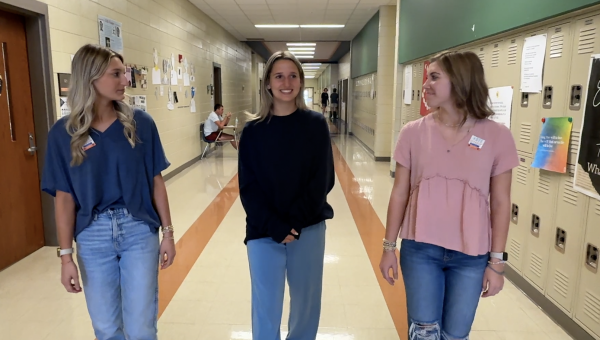Virtual reality: Students and staff embrace a new model of education
This school year is very different for everyone due to the coronavirus. Headed back this year, Chapman students were given a choice to either attend school twice a week or do full-time online. Doing virtual school has many pros and cons that are different for each person.
This school year will be very abnormal from what most students are used to. For example, students will not have as much social interaction as they did when attending school 5 days a week.
“I think the biggest difference between online school and regular school would be the social interaction,” said sophomore Allie Wright, a fully virtual student. “With online school, it is just you and the computer for at least five hours-a-day. Regular school gives you the opportunity to interact with your friends and your teachers.”
Students this year are having to learn how to work on their own when most of them have been in a classroom setting since kindergarten. Even for kids attending school in the hybrid model, the interaction with other students is limited.
Students doing virtual school can only contact their teachers through video calls or emails, meaning they do most of the learning on their own.
Wright says that a benefit of virtual school is how self-paced it is.
“Our online teachers recommended you work at least 5 hours a day, so you choose when those 5 hours are,” Wright explained. “For me this is very beneficial because I can wake up early, do my workout, do all my work, then go (practice dressage).”
Virtual school may have many benefits; however, it can also have challenges. Online school may be hard for students who have trouble learning on their own and need to ask someone for help.
When students are at home, they can’t just raise their hand and get their teacher to show them what to do. With technology,students can still reach out to people through text or email, but it’s not the same as an in-person conversation.
“Asking for help from your online teacher is definitely harder. For online they ask you to format an email with your name and the exact problem you are occurring,” said Wright. “You have to wait, and it may even be the next day before they respond!”
For teachers, learning how to teach over the computer has been a big change also. Some parts of teaching have been much more difficult for them this year.
“It takes longer to give feedback online,” said Amanda Coates, a world language teacher. “In the classroom, I can walk around and give quick, immediate feedback as we work. In a virtual world language class, it is also very difficult to continuously connect the individual parts of lessons to the big picture or provide quick anecdotes that help students relate to a topic.”
She explains it is harder to communicate with students online but that students have risen to the challenges.
“I have seen a lot of creativity come out in the work students have turned in online, and I am proud of their determination to learn in difficult circumstances,” Coates said.
Your donation will support the student journalists of Chapman High School. Your contribution will allow us to purchase equipment and cover our annual website hosting costs.





